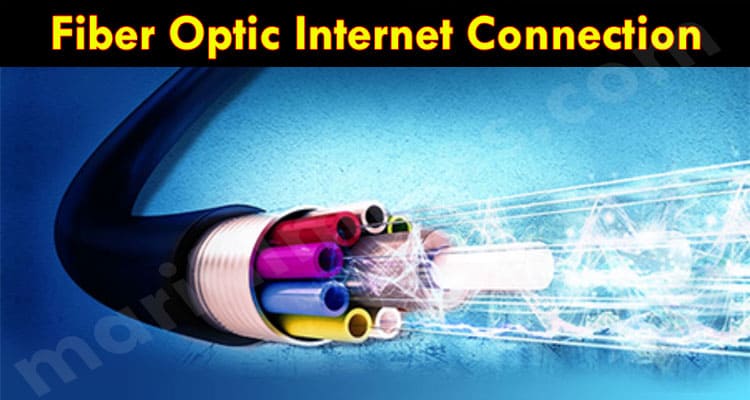Fiber Optic Internet Connection: That fiber optic is better than other internet technologies is a common sentiment. But now that fiber optic is becoming more available, many Americans are having to decide if they should make the switch. This article will help you make that choice by exploring the seven fundamental advantages of fiber.
1. Speed
The number one advantage of fiber-optic internet is speed. The average download speed of cable in the U.S. in 2021 is 195 Mbps. Of the 44% of Americans that currently have access to fiber internet, all of them have the option for up to 1 Gbps. Most cable companies do not offer 500 Mbps let alone 1 Gbps. Fiber also provides what is called symmetrical speed. If you choose a 1 Gbps fiber plan, that means that you get 1 Gbps download and 1 Gbps upload. That is not the case with cable. In fact, during pandemic lockdowns in the U.S., cable ISPs were scrambling to increase upload speeds often from a meager 2-5 Mbps to 20 Mbps because there were so many people working from home, students are on online classes, video conferencing, streaming TV shows and movies, and online gaming.
2. Bandwidth
Think of the internet as a highway. If speed is the pace at which the cars are moving, bandwidth is the number of lanes. As long as there are enough lanes, the cars can continue to travel the speed limit, but if congestion happens, then the cars must slow down. There are fundamental disadvantages of the copper wire used for cable internet that will never allow for the bandwidth that fiber provides. This is a primary reason why cable companies have long offered lower upload speeds. Due to greater bandwidth that fiber provides, customers generally do not have to deal with throttling and data caps, and they are usually not subject to the worse performance during peak periods that often happens with cable.
3. Latency
Latency is the delay between sending data over the internet and receiving a response. Cable internet is pretty good in this department offering 15-40 milliseconds but fiber is king at 10-20 ms. This is why fiber is the preferred Internet among people who play competitive multiplayer video games online. But latency is not just important for gamers. If you work from home and video conference or perform any collaborative work in real time, then latency is important to you as well.
4. Reliability
Cable requires transmitting electricity over copper lines. That means that it requires more maintenance than fiber and is more prone to failure. Another issue is that while coaxial cable can be buried as fiber-optic cable usually is, much of the coaxial cable in the U.S. is strung like telephone lines. That means that it is more prone to damage from storms and accidents, and that can lead to long outages.
5. Price Per Mbps
Cost is often cited as a disadvantage of fiber, and it is true that when you compare the most affordable plans, cable is usually less expensive. But this gap is closing, and fiber provides a better price per Mbps. In other words, you may be spending more dollars, but you are getting more for each dollar spent.
6. Security
Cable internet transmits data via electricity, and security can be compromised by tapping into the line. This is another reason most businesses choose fiber for their infrastructure.
7. Future Proof
We have already reached the point where advancement of the internet is starting to outpace the capabilities of cable internet. The speed potential of fiber—due to it involving the transmitting of light—is practically limitless. The fiber lines that we currently have installed throughout the U.S. can easily handle terabit speeds. That means that you can invest in fiber for your home or business without any concern that this technology will become outmoded in your lifetime or the lifetime of your children.
Also Read – Internet Speeds Needed For Small Business

